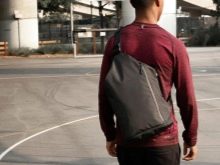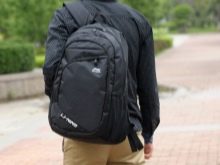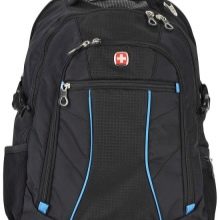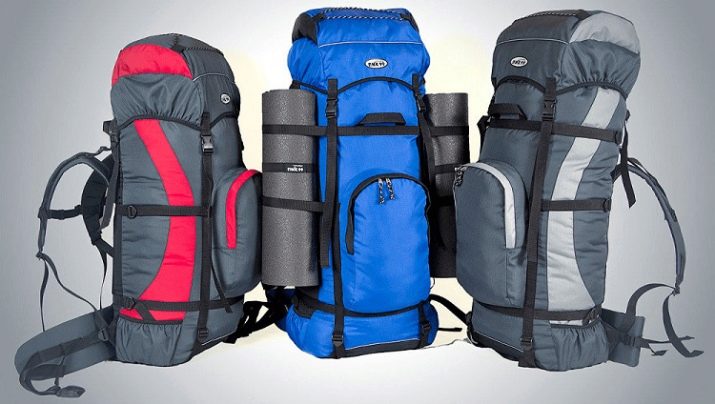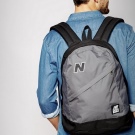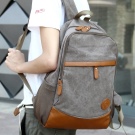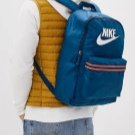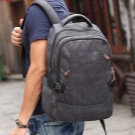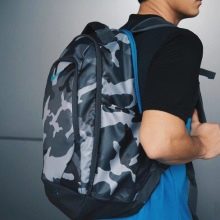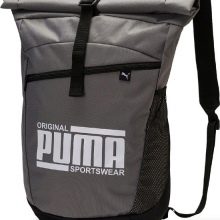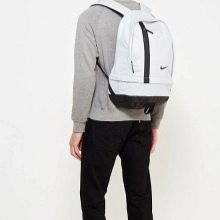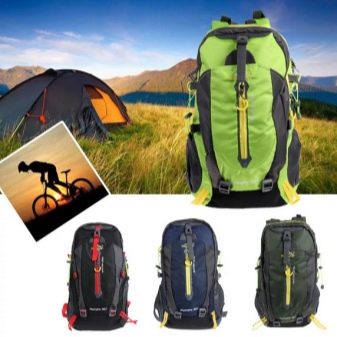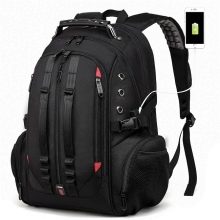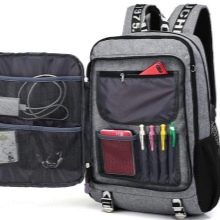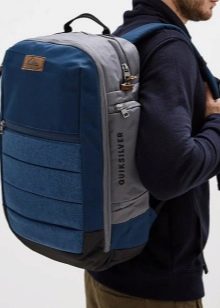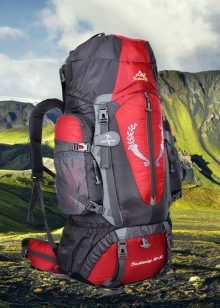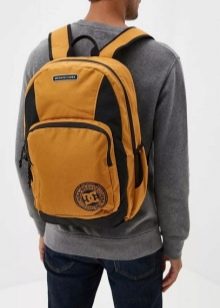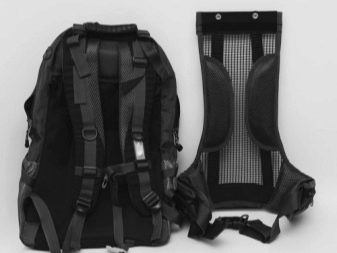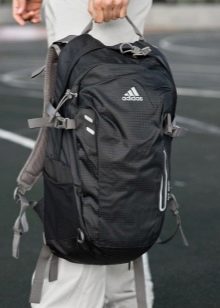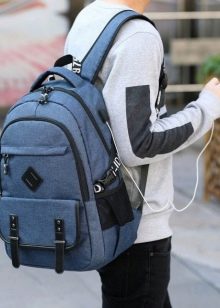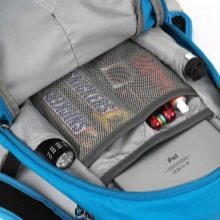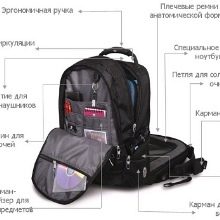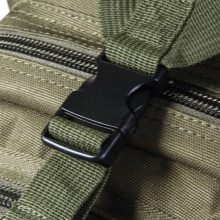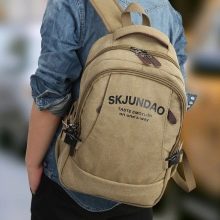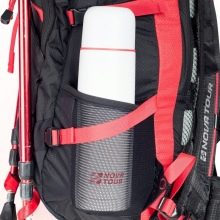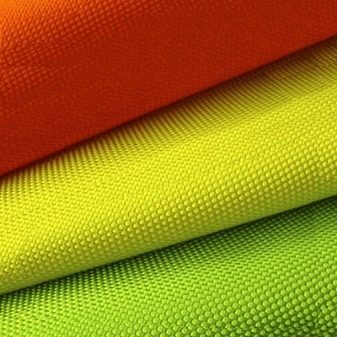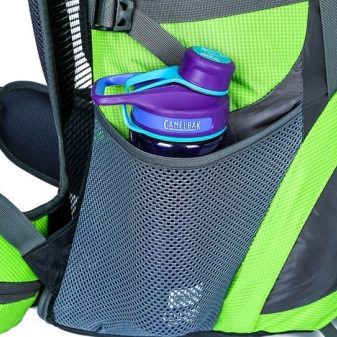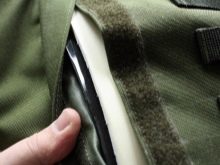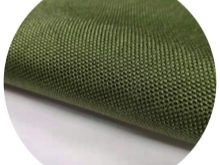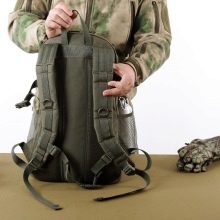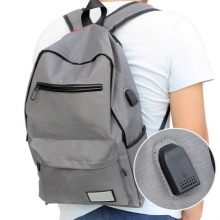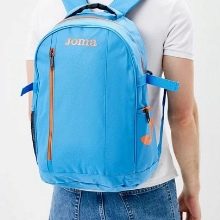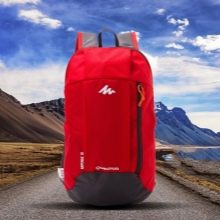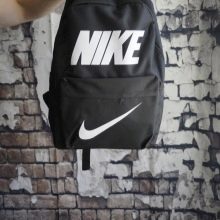Men's sports backpacks: description of types and tips for choosing

Backpacks for men have always been popular with lovers of an active lifestyle and athletes. However, today it is not just a container for sportswear and tourist equipment - you can often find men with a backpack on their shoulders in the city, this accessory looks harmoniously in a store, in a cafe, and even in an office.
Let us dwell in more detail on the features of men's backpacks, their varieties and the rules for choosing the optimal model.
Views
Sports backpacks these days can be used not only for visiting the gym and hiking, but also for everyday wear. That's why designers offer several options for such accessories for men.
Everyday
Unfortunately, not all office workers are allowed to come to work with a sports backpack on their backs. But those lucky ones who do not have a strict dress code wear it with great pleasure. The undoubted advantage of such products lies in their spaciousness and ease of wearing.
Anything can fit inside such a backpack: a folder with documents, a modern e-book, a notebook, as well as a wallet, laptop and many other items necessary for work. If a man plans to visit the gym after work, then a uniform can easily fit into a backpack. The list can be endless, and it's up to you to decide what to put in your bag.
Sports
This classic sports model is chosen by those who regularly attend training. Of course, for some sports that require the movement of bulky equipment, for example, tennis or hockey, it is better to give preference to sports bags, but for other activities it is quite possible to use a backpack. It is worn behind the back, so the weight of the load is evenly distributed throughout the body. - this minimizes the risk of back problems.
Usually, men put sportswear, a pair of sneakers and small additional accessories inside, if necessary.
Tourist
For lovers of sports tourism and hiking, large backpacks are suitable. At the same time, they are subject to increased strength requirements.... Such backpacks fit not only sportswear, but also a supply of provisions, the necessary inventory and special equipment. There are separate types of backpacks for mountaineering, cycling, yachting, hiking and other active sports.
Thus, regardless of lifestyle and interests, a sports backpack can be useful for a man in any situation... Without a doubt, this item can be classified as a must have for any representative of the strong half of humanity.
How to choose?
When buying a men's backpack, you should pay attention to several criteria.
The size
When choosing a model for a sports backpack, size is one of the basic criteria. It will not be difficult to decide on it if you clearly understand how many things you plan to wear over your shoulders. If you intend to use the bag exclusively for moving around the city streets, then a small or medium-sized model will be enough. The situation is different with backpacks for sports tourism. It is extremely important that they fit the maximum number of items needed during the campaign.
Before buying a particular model, be sure to try it on, especially if you are looking for a backpack for extreme sports. The bag must be put on, fastened to all the straps provided on it and the strap must be adjusted, if possible, load it. And then it's worth moving - sit down, bend over, walk with him. If somewhere it starts to press or rub, then try to adjust the position of the straps, or take a closer look at another model - it is possible that this product is designed for other parameters of growth and build.
Choose the size that is right for you - when hiking and cycling, it is extremely important for a man to feel light and comfortable. Otherwise, fatigue comes very quickly, and this is completely unacceptable for playing sports.
Frame
For extreme sports and tourism, models are usually chosen, the frame of which is a metal frame. Such a rigid framework allows the original shape of the product to be maintained. This is especially true for backpacks with orthopedic solutions, as well as products that provide additional back aeration.
Everyday models of backpacks used to visit the gym are rarely equipped with such a frame. - in most cases, they are lightweight products made of textiles or natural leather.
Internal organization
When it comes to interior furnishings, sports backpacks do not require a lot of pockets and compartments. Nevertheless, this issue should not be completely ignored. Life in a big city leaves its mark: many attend training after work or school. That's why it is desirable that such a backpack still have not only one compartment, but also a couple of pockets for a mobile phone, tablet, wallet, wet wipes and other trifles.
Clasp
When sewing sports backpacks, manufacturers use several fastener options.
- Lightning - found in models of all types, especially in urban ones, where it additionally performs a decorative function.
- Latch - usually made of plastic, it is necessary for fixing external pockets, can additionally fix the belts of tourist models. Convenient to use and very practical.
- Laces - as a rule, they are equipped with metal or plastic clips. This fastener is suitable for sports and tourist models, allowing you to quickly and without much hassle close the backpack.
Material
For backpacks intended for active sports and tourism, the waterproofing characteristics of the material are of particular importance. Training and camps can take place in all weather conditions, so ordinary textiles cannot provide protection in case of rain or snow. Most often, backpacks are sewn either from waterproof fabrics, or they complement the model with a special raincoat cover.
Another requirement for the material is its strength. The best materials for this criterion are Oxford and Cordura. These are synthetic fabrics, since natural fabrics for sewing sports bags are practically not used these days.
Cordura material was originally created for the needs of the military. It is a dense polyamide fabric. It consists of threads, which, in turn, are made from twisted fibers. Cordura can have a cotton component, due to which it acquires additional tear strength and abrasion resistance. The fabric is treated with water-repellent impregnations.
Cordura has a presentable appearance, as it is used, it does not stretch or crumble, and due to the different density of the canvas, it can have the widest scope of use. However, this material has its drawbacks. It is expensive, but at the same time it is quite heavy and in the cold it begins to "dull".
In general, backpacks made of this canvas have proven themselves well for long hikes, when the strength and strength of the product are the main factors.
Oxford also has a nylon base but is much lighter than Cordura. This material does not lose its elasticity in cold weather, does not change its operational characteristics and in heat, has high parameters of hydraulic resistance, has an aesthetic appearance, and is cheaper than Cordura.
Among the disadvantages can be noted the burnout of the material during prolonged exposure to the fresh air. Such models are optimal for sports on rough terrain.
Another material that is used for sewing sports backpacks is polyester. Among the advantages, one can note its frost resistance, lightness, as well as the retention of shape, weight and color under the influence of ultraviolet rays. Polyester does not deform with prolonged use, does not stretch or crumble. However, in terms of strength, it is significantly inferior to Cordura and Oxford, does not withstand loads, and in case of bad weather it can only save from a little rain.
Such backpacks are not suitable for extreme sports and tourism - they are purchased for fitness.




